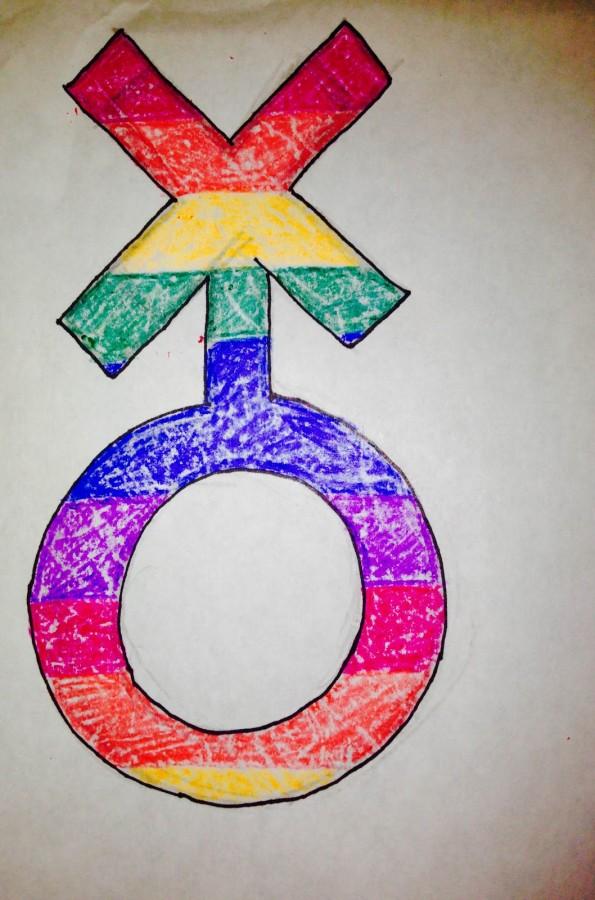Respecting the pronouns
This symbol represents non-binary gender identities. The non-binary community is regularly known for using they/them pronouns.
December 4, 2015
The LGBT+ community is becoming more a part of our social normality ever since the gay marriage law was passed on June 26, 2015. Those of the LGBT+ community are coming out of the dark and expressing who and what they are. With that, comes confusion for the heteronormative world. Different genders are getting a little more recognition, and with that, come different pronouns.
Gender neutral pronouns like they/them are pronouns that do not associate with a particular gender. They/Them pronouns are usually used in replacement of her/she, or he/him. Agender, genderfluid, and non-binary identities are commonly known to use the They/Them pronouns. Agender means you do not identify as either boy or girl. To be genderfluid means that the person may at any time identify as male, female, neutral, or some combination of identities. According to Non-Binary.org, the term non-binary is used as an umbrella term covering any gender identity that does not fit within the gender binary, or is not strictly male or female.
When speaking to or about someone who uses gender neutral pronouns, it is crucial that you put in the effort to respect them. Senior Gay-Straight Alliance leader, Ellix Cain gave some tips on whenever you do not use the correct pronouns: “The best thing to do is say sorry, then use the correct pronoun and continue with the sentence. If you make a big deal out of messing up, then it is too much, and you are making the other person feel awkward and different, but if you ignore it completely and do not say sorry, then it is really rude. Because while you may hope the other person does not notice you messed up, there is a 99 percent chance they did, and ignoring your mistake will seem like you are ignoring and disrespecting their existence. So just be polite, say sorry, correct yourself and continue.”
Completely ignoring someone’s pronouns is extremely rude. Freshman Eli McCarthy uses They/Them: “I think the thing that happens most often is someone has no idea that my gender exists, and they just completely invalidate me and my identity. They are just like, doesn’t they mean more than one person or are you just confused? Like I have to pick between my two choices: male or female.”
Using the gender neutral pronouns is easier than you may think. Yes, it takes some getting used to, but at the same time, you are respecting and not misgendering those around you. You should never assume someone’s pronouns, even if they look like a certain gender to you. A good way to make a person feel comfortable sharing their pronouns with you is to share yours when you introduce yourself to someone new. If this becomes common practice, we will all do a better job respecting everyone’s gender identities.












